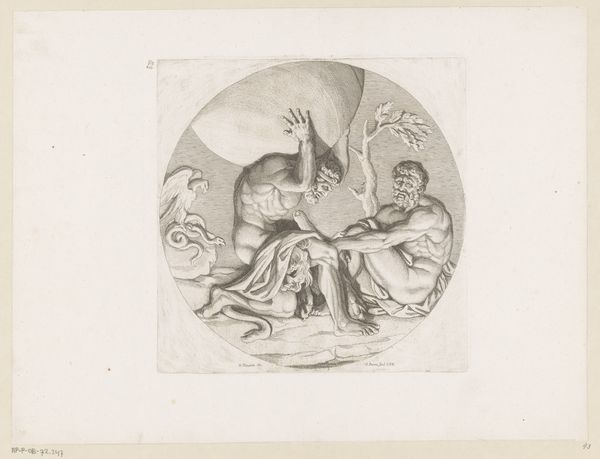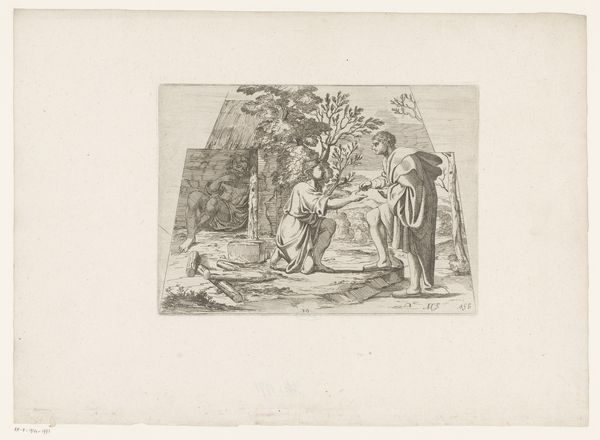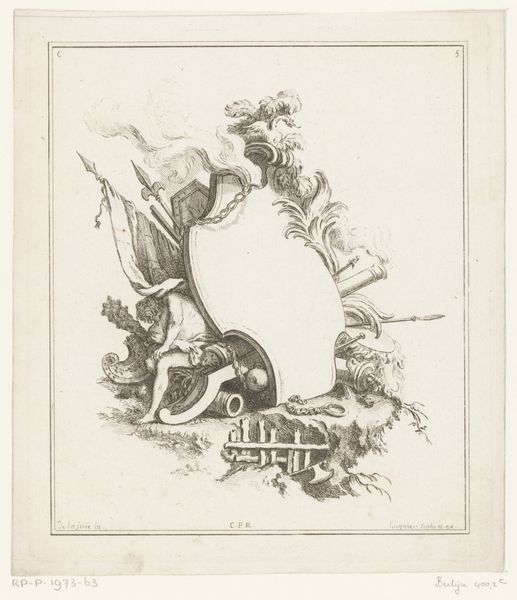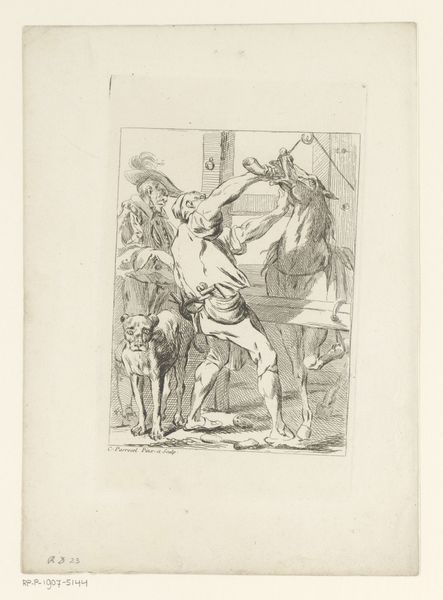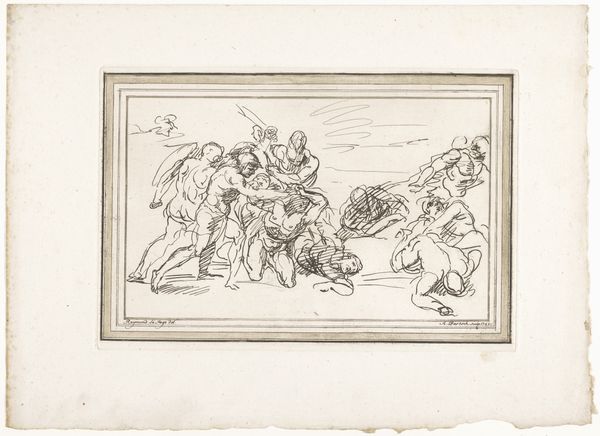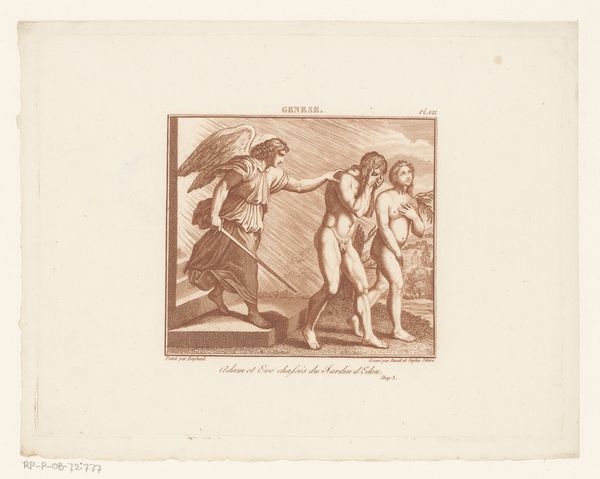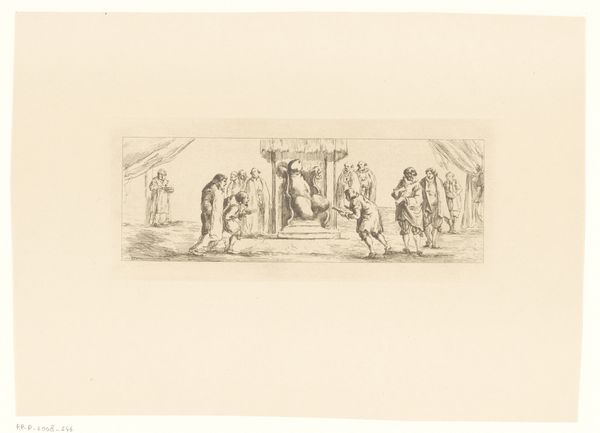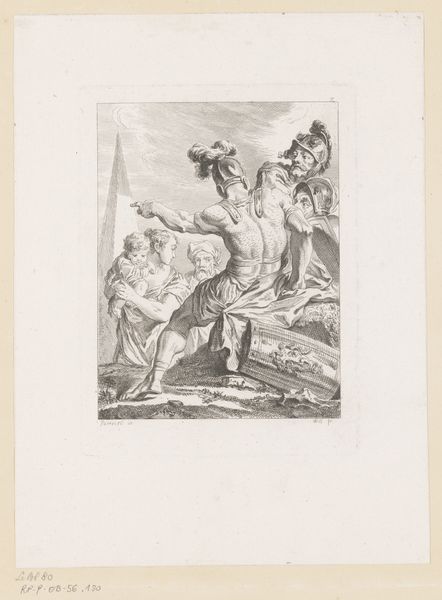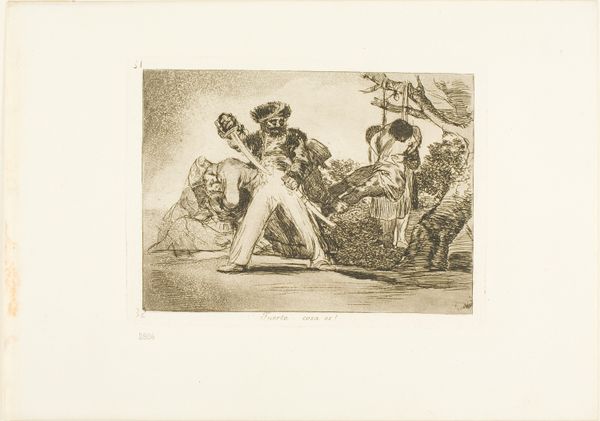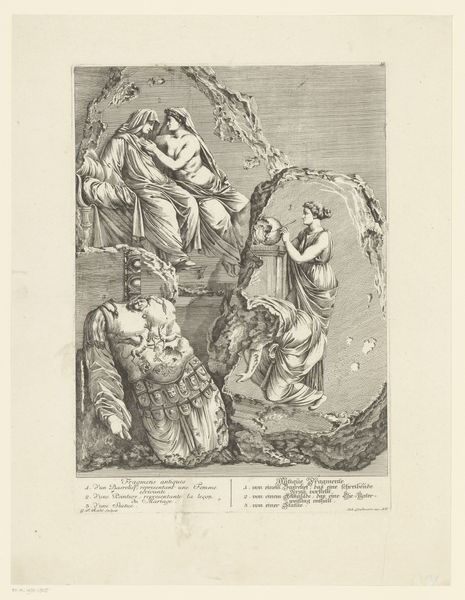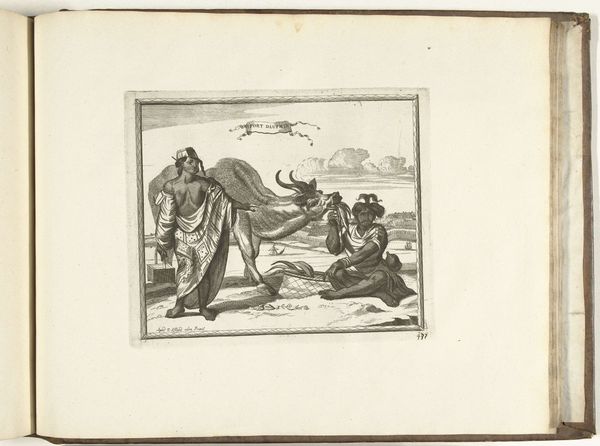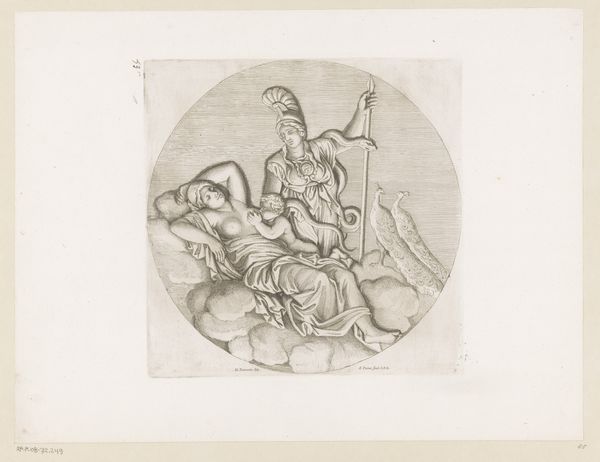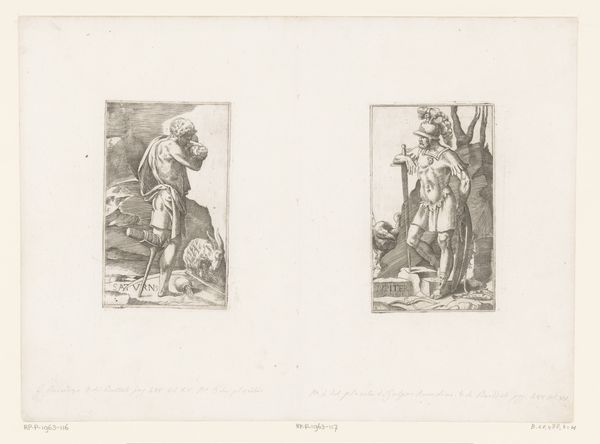
etching, engraving
#
baroque
#
etching
#
classical-realism
#
figuration
#
history-painting
#
engraving
Dimensions: height 299 mm, width 300 mm
Copyright: Rijks Museum: Open Domain
This print, Hercules vecht met Diomedes, was made by Jean Pesne in the 17th century. It's an engraving, meaning the artist would have used a tool called a burin to carve lines into a copper plate, which was then inked and pressed onto paper. Look closely and you can see the remarkable level of detail achieved through this process, from the musculature of Hercules to the folds of Diomedes' drapery. The stark contrast between light and shadow gives the scene a dramatic intensity. Engraving was a highly skilled and labor-intensive craft, requiring years of training. In Pesne's time, prints like these were often made as reproductions of paintings or sculptures, allowing for wider dissemination of images and ideas. They played a crucial role in shaping artistic taste and knowledge. Consider the amount of work involved in creating this print, from the initial design to the final impression. It's a testament to the skill and dedication of the engraver, and a reminder that even seemingly simple images can have a rich and complex history of making.
Comments
No comments
Be the first to comment and join the conversation on the ultimate creative platform.

